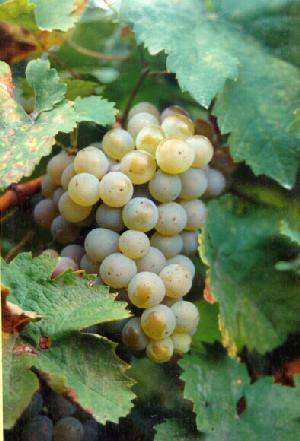Liebfraumilch
Liebfraumilch[edit | edit source]
Liebfraumilch is a style of semi-sweet white wine from Germany, primarily produced in the Rheinhessen, Pfalz, Nahe, and Rheingau wine regions. The name "Liebfraumilch" translates to "Beloved Lady's Milk," a reference to the Liebfrauenkirche (Church of Our Lady) in Worms, Germany, which is historically associated with the wine.
History[edit | edit source]
The origins of Liebfraumilch date back to the 18th century, when wines from the vineyards surrounding the Liebfrauenkirche were highly regarded. These wines were known for their quality and were often exported to other parts of Europe. Over time, the name "Liebfraumilch" became associated with a broader category of wines produced in the region, rather than a specific vineyard.
Production[edit | edit source]
Liebfraumilch is typically made from a blend of Riesling, Silvaner, Müller-Thurgau, and Kerner grapes. The wine is known for its light, fruity character and moderate sweetness, which is achieved by stopping fermentation before all the sugar is converted to alcohol. This style of wine is often enjoyed as an easy-drinking, everyday wine.
Characteristics[edit | edit source]
Liebfraumilch wines are characterized by their pale yellow color and floral aroma. The taste is typically fruity, with notes of apple, peach, and citrus, balanced by a mild acidity. The sweetness level can vary, but it is generally on the sweeter side compared to other German wines.
Regulations[edit | edit source]
Under German wine law, Liebfraumilch must be made from grapes grown in one of the four designated regions: Rheinhessen, Pfalz, Nahe, or Rheingau. The wine must also meet certain quality standards, including a minimum alcohol content of 9% and a maximum residual sugar content of 18 grams per liter. However, Liebfraumilch is classified as a "Qualitätswein bestimmter Anbaugebiete" (QbA), which is a lower classification than the more prestigious "Prädikatswein."
Cultural Impact[edit | edit source]
Liebfraumilch gained international popularity in the mid-20th century, particularly in the United Kingdom and the United States, where it was marketed as an affordable and approachable German wine. Its popularity has waned in recent years as consumers have become more interested in drier and more complex wines, but it remains a staple in many markets.
Related pages[edit | edit source]
Search WikiMD
Ad.Tired of being Overweight? Try W8MD's physician weight loss program.
Semaglutide (Ozempic / Wegovy and Tirzepatide (Mounjaro / Zepbound) available.
Advertise on WikiMD
|
WikiMD's Wellness Encyclopedia |
| Let Food Be Thy Medicine Medicine Thy Food - Hippocrates |
Translate this page: - East Asian
中文,
日本,
한국어,
South Asian
हिन्दी,
தமிழ்,
తెలుగు,
Urdu,
ಕನ್ನಡ,
Southeast Asian
Indonesian,
Vietnamese,
Thai,
မြန်မာဘာသာ,
বাংলা
European
español,
Deutsch,
français,
Greek,
português do Brasil,
polski,
română,
русский,
Nederlands,
norsk,
svenska,
suomi,
Italian
Middle Eastern & African
عربى,
Turkish,
Persian,
Hebrew,
Afrikaans,
isiZulu,
Kiswahili,
Other
Bulgarian,
Hungarian,
Czech,
Swedish,
മലയാളം,
मराठी,
ਪੰਜਾਬੀ,
ગુજરાતી,
Portuguese,
Ukrainian
Medical Disclaimer: WikiMD is not a substitute for professional medical advice. The information on WikiMD is provided as an information resource only, may be incorrect, outdated or misleading, and is not to be used or relied on for any diagnostic or treatment purposes. Please consult your health care provider before making any healthcare decisions or for guidance about a specific medical condition. WikiMD expressly disclaims responsibility, and shall have no liability, for any damages, loss, injury, or liability whatsoever suffered as a result of your reliance on the information contained in this site. By visiting this site you agree to the foregoing terms and conditions, which may from time to time be changed or supplemented by WikiMD. If you do not agree to the foregoing terms and conditions, you should not enter or use this site. See full disclaimer.
Credits:Most images are courtesy of Wikimedia commons, and templates, categories Wikipedia, licensed under CC BY SA or similar.
Contributors: Prab R. Tumpati, MD


